
-
 Trump admin detains pro-Palestinian campus protest leader
Trump admin detains pro-Palestinian campus protest leader
-
Japan auctions emergency rice reserves as prices soar

-
 Hong Kong, Shanghai lead losers on mixed day for Asian markets
Hong Kong, Shanghai lead losers on mixed day for Asian markets
-
China-US trade war heats up as Beijing's tariffs take effect

-
 7-Eleven to explore sell-offs with Couche-Tard ahead of potential merger
7-Eleven to explore sell-offs with Couche-Tard ahead of potential merger
-
'So important': Selma marks 60 years since US civil rights march

-
 Black comedy from award-winning 'Parasite' director tops N.America box office
Black comedy from award-winning 'Parasite' director tops N.America box office
-
EU chief sees US as 'allies' despite 'differences'

-
 French research groups urged to welcome scientists fleeing US
French research groups urged to welcome scientists fleeing US
-
Journalist quits broadcaster after comparing French actions in Algeria to Nazi massacre

-
 Highlights from Paris Women's Fashion Week
Highlights from Paris Women's Fashion Week
-
US ends waiver for Iraq to buy Iranian electricity

-
 China-US trade war heats up with Beijing's tariffs to take effect
China-US trade war heats up with Beijing's tariffs to take effect
-
Greenland's Inuits rediscover their national pride

-
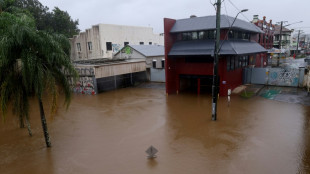 Floods, mass power cuts as wild weather bashes eastern Australia
Floods, mass power cuts as wild weather bashes eastern Australia
-
Wild weather leaves mass blackouts in Australia

-
 China consumption slump deepens as February prices drop
China consumption slump deepens as February prices drop
-
Phone bans sweep US schools despite skepticism
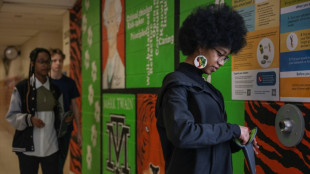
-
 Some 200 detained after Istanbul Women's Day march: organisers
Some 200 detained after Istanbul Women's Day march: organisers
-
'Grieving': US federal workers thrown into uncertain job market

-
 Remains of murdered Indigenous woman found at Canada landfill
Remains of murdered Indigenous woman found at Canada landfill
-
Women will overthrow Iran's Islamic republic: Nobel laureate

-
 Women step into the ring at west African wrestling tournament
Women step into the ring at west African wrestling tournament
-
Trump's tariff rollback brings limited respite as new levies loom

-
 Hackman died of natural causes, a week after wife: medical examiner
Hackman died of natural causes, a week after wife: medical examiner
-
Oops, we tipped it again: Mission over for sideways US lander
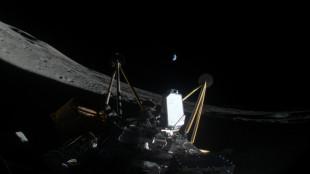
-
 Cyclone Alfred downgraded to tropical low as it nears Australia
Cyclone Alfred downgraded to tropical low as it nears Australia
-
Global stocks mixed as Trump shifts on tariffs weighs on sentiment

-
 Trump says dairy, lumber tariffs on Canada may come soon
Trump says dairy, lumber tariffs on Canada may come soon
-
Trump cuts $400 mn from Columbia University over anti-Semitism claims

-
 US Fed chair flags policy uncertainty but in no rush to adjust rates
US Fed chair flags policy uncertainty but in no rush to adjust rates
-
Adopted orphan brings couple 'paradise' in war-ravaged Gaza

-
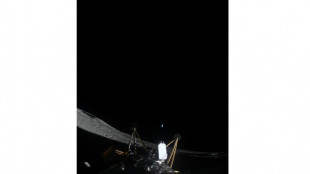 Oops, we tipped it again: Mission over for private US lander
Oops, we tipped it again: Mission over for private US lander
-
Greenland's mining bonanza still a distant promise

-
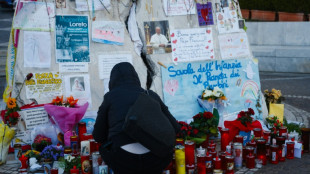 Pope 'stable' as marks three weeks in hospital with breathless audio message
Pope 'stable' as marks three weeks in hospital with breathless audio message
-
Shares slump on Trump tariffs tinkering, jobs

-
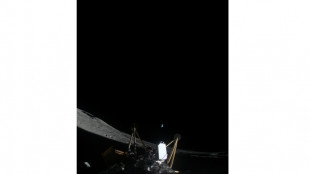 Mission over for private US lander after wonky landing
Mission over for private US lander after wonky landing
-
Thousands stranded as massive WWII bomb blocks Paris train station

-
 UK court cuts longest jail terms on activists, rejects 10 appeals
UK court cuts longest jail terms on activists, rejects 10 appeals
-
US hiring misses expectations in February as jobs market faces pressure

-
 S.Sudan heatwave 'more likely' due to climate change: study
S.Sudan heatwave 'more likely' due to climate change: study
-
US company says Moon mission over after landing sideways again
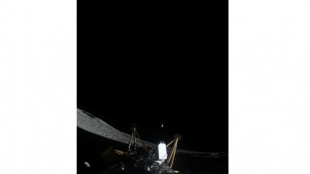
-
 Trump says farmers keen to quit 'terrible' S. Africa welcome in US
Trump says farmers keen to quit 'terrible' S. Africa welcome in US
-
US stock markets rise as investors track Trump tariffs, jobs

-
 US hiring misses expectations in February, jobs market sees pressure
US hiring misses expectations in February, jobs market sees pressure
-
Disco, reggae on King Charles's 'eclectic' Apple playlist

-
 Australian casino firm strikes deal to avoid liquidity crunch
Australian casino firm strikes deal to avoid liquidity crunch
-
Deposed king's grandson makes low-key return to Egypt

-
 Stock markets, bitcoin down as Trump policies roil markets
Stock markets, bitcoin down as Trump policies roil markets
-
Bangladesh student leader aims to finish what uprising began


NFTs and burning paintings at new Damien Hirst show
The latest show by Damien Hirst displays thousands of the provocative British artist's colourful spot paintings... many of which he will set on fire after selling them in digital form as NFTs.
The exhibition, "The Currency", which opens Friday in London, is Hirst's first project involving NFTs, a new technology growing in popularity as a way of owning art.
At the Newport Street Gallery in south London, huge panels are covered with 10,000 unique spot paintings on A4-sized paper.
Multicoloured dots stretch as far as the eye can see. On the back of each are handwritten phrases based on lyrics of the 57-year-old artist's favourite songs.
And upstairs in the gallery, six fireplaces are ready to burn the works.
The works date from 2016 when Hirst created paintings he thought could become a kind of currency.
But it was two years later that the artist, whose works are among the most expensive on the market for contemporary creators, came up with the idea for the project in its current form.
NFTs or "Non-Fungible Token", are digital works that cannot be replaced with anything else and are therefore unique.
Each has a digital certificate of authenticity which, in theory at least, cannot be tampered with: it is registered in a blockchain, like cryptocurrencies.
- Forcing a choice -
"The Currency" project launched in July last year, when the 10,000 works went on sale for $2,000 each.
Each of the multi-coloured dot paintings was signed by Hirst. Each also had its own NFT. And prices soared rapidly, with one painting selling for $172,239.
The people who bought the paintings received the corresponding NFT and had a year, until July 27, to choose whether to keep the NFT or exchange it for the original painting.
More than half (5,149) decided to take the painting while the rest opted to keep the NFTs.
Hirst now plans to burn the 4,851 physical paintings of those who chose NFTs.
"It's an experiment... We're forcing people to make their choice," the artist says in a video.
Hirst will set the works on fire himself at the gallery on October 11, a day before the opening of Frieze London, one of the world's biggest contemporary art fairs.
He will only burn some of the unwanted paintings, while the rest will remain on display until the exhibition closes on October 30.
- Forgetting the physical world -
"Conceptual artists in the 1960s and 1970s said art doesn't exist in the art object, it exists in the mind of the viewer, and this project isn't any different," says Hirst.
"Art doesn't have to just exist in the physical world, it can also exist in the digital world too and now because of the blockchain so can the ownership of that art."
Hirst has made a career out of pushing back the boundaries of art.
A shark suspended in a tank of formaldehyde -- "The Physical Impossibility of Death in the Mind of Someone Living" from 1991 -- was one early work that got him noticed.
Since exhibiting a diamond-encrusted skull in 2007 -- "For the Love of God", one of his best known works -- the artist says he has been thinking about the concepts of wealth and value.
"This project explores the boundaries of art and currency -- when art changes and becomes a currency, and when currency becomes art," he says.
A.Agostinelli--CPN
